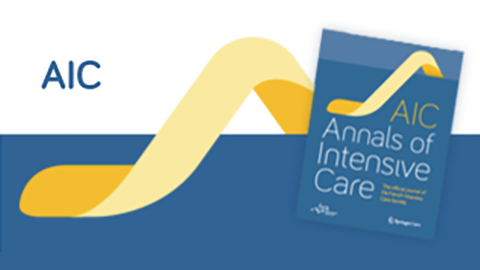06/03/2020


Source
Abstract
Background
High-frequency oscillatory ventilation (HFOV) may theoretically provide lung protective ventilation. The negative clinical results may be due to inadequate mean airway pressure (mPaw) settings in HFOV. Our objective was to evaluate the air distribution, ventilatory and hemodynamic effects of individual mPaw titration during HFOV in ARDS animal based on oxygenation and electrical impedance tomography (EIT)Methods
ARDS was introduced with repeated bronchoalveolar lavage followed by injurious mechanical ventilation in ten healthy male pigs (51.2 ± 1.9 kg). Settings of HFOV were 9 Hz (respiratory frequency), 33% (inspiratory time) and 70 cmH_2O (∆pressure). After lung recruitment, the mPaw was reduced in steps of 3 cmH_2O every 6 min. Hemodynamics and blood gases were obtained in each step. Regional ventilation distribution was determined with EITResults
PaO_2/FiO_2 decreased significantly during the mPaw decremental phase ( p < 0.001). Lung overdistended regions decreased, while recruitable regions increased as mPaw decreased. The optimal mPaw with respect to PaO_2/FiO_2 was 21 (18.0–21.0) cmH_2O, that is comparable to EIT-based center of ventilation (EIT-CoV) and EIT-collapse/over, 19.5 (15.0–21.0) and 19.5 (18.0–21.8), respectively ( p = 0.07). EIT-CoV decreasing along with mPaw decrease revealed redistribution toward non-dependent regions. The individual mPaw titrated by EIT-based indices improved regional ventilation distribution with respect to overdistension and collapse ( p = 0.035). Conclusion Our data suggested personalized optimal mPaw titration by EIT-based indices improves regional ventilation distribution and lung homogeneity during high-frequency oscillatory ventilation.Liens article
©2020 The Author(s)